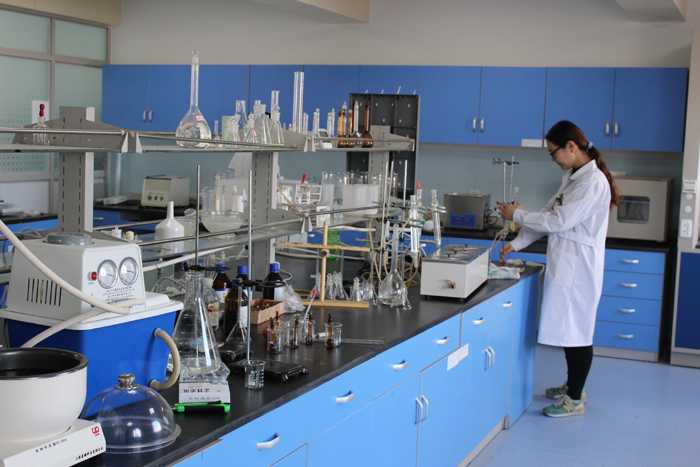
To ensure your chemical metering pump works well without a hitch, it’s a good idea to get expert advice before you buy and install it. The professional installer you choose can arrange for the final installation. They will also provide any specialized system components you may need. Field training may be necessary in addition to mechanical schematics, manuals, plant drawings and layouts, and other similar materials, depending on the situation. However, a chemical metering pump will eventually wear out, break down, and need an emergency repair, regardless of how well you install and maintain it.
What is a chemical metering pump?
As the process demands, the metering pump’s capacity can be adjusted automatically or manually. It is a positive displacement chemical metering device. Transfer pumps, used to transfer liquids from one location to another, account for nearly 90 percent of all pumps sold. On the other hand, metering pumps are specialized pumps made for the precise injection of substances like slurries, corrosives, acids, viscous liquids, bases, or chemicals. Any time any of the following applies, a metering pump is necessary:
- Pumping of slurries and viscous fluids
- Existence of high system pressure
- Handling of high-temperature, dangerous, or corrosive fluids
- PLCs, microprocessors, computers, or DCS can help regulate the varying flow rates.
- Demands a feed rate with a high degree of precision
Basic parts of a chemical metering pump
- Accuracy:
When appropriately installed, industrial-grade metering pumps typically have a steady-state precision of +1.0 percent or higher. A chemical metering pump’s turndown ratio serves as the basis for evaluating its precision over a range, even though the pump can typically be adjusted to pump at any flow rate between zero and maximum capacity. Modern hydraulically operated metering pumps can precisely dose chemicals within 1 to 100 percent of their rated capacity, thanks to their 1,000-1 turndown ratio.
- Driver:
Typically, a constant-speed AC motor powers the pump. They also use hydraulic, pneumatic, and variable-speed drivers. Solenoid coils are a cost-effective driving mechanism for smaller pumps.
- Flow Adjustment:
Stroking speed, effective stroke length, or varying stroke length are the three variables that control the pump’s flow rate. The flow rate of most metering pumps can be adjusted in response to process signals using either a pneumatic or electronic actuator or a micrometer screw.
- Liquid End:
The portion of the pump that is in contact with the liquid is called the “wetted” end. When dealing with dangerous or poisonous chemicals, it is crucial to consider how well they can protect plant employees and the environment. Application-specific requirements, such as the corrosiveness of the pumped materials, fluid viscosity, flow rate, and temperature, dictate the material choice. This can be plastic, nickel alloy, or stainless steel.
- Driver Mechanism:
The drive mechanism converts the driver’s rotational motion into reciprocating movement. Industrial-duty pumps will immerse this part of the pump in an oil bath for uninterrupted operation to ensure reliability. A solenoid pump generates linear motion directly through an electro-magnetic coil.
Here are a few of the most typical issues:
Excess chemical
Possible causes include chemical siphoning into the main line or well, using very rich chemicals in the solution tank, or an excessively high pump setting.
Loss of chemical residue
Running dry of the solution container, scaling at the injection site, or using an extremely low pump setting are all potential causes.
Leak at the tubing connection
This is typically the result of chemical attacks or worn tube ends.
The pump is not priming or is not priming properly
Excessive suction lift height, improperly sealed ball checks, a filthy check valve, or high discharge pressure are all potential causes.
Non-functioning pump
A number of factors can contribute to this issue, including a suction side leak, an incorrect pump setting, a ruptured diaphragm, a low level of solution, a malfunctioning electrical control board or wiring, a broken or cracked pump head, non-sealing valve seats, chlorine gas or air inside the head, or a voltage drop.
Where to use a chemical metering pump?
A wide variety of chemicals are needed in the processes of numerous applications. These chemicals include softening agents, bases and acids, coagulants, antifreeze, wax inhibitors, process additives, polymers, disinfectants, and biocides. Some of the most common industries that buy metering pumps are:
- Manufacturing
- Wastewater treatment and potable water
- Power generation
- Processing of petrochemicals and chemicals
- Agriculture
- Oil and gas production
- Production of food and beverage
- Industrial water treatment (boilers and cooling towers)
Conclusion
Regular maintenance should keep these issues at bay, and with the proper training, most in-house technicians can do just that. Still, you should get the system checked out by a pro on a regular basis to fix any worn parts, rebuild it if necessary, or upgrade it if necessary. If you rebuild your chemical metering pump properly, it should have the same warranty as a new one, but it will be much more affordable.
